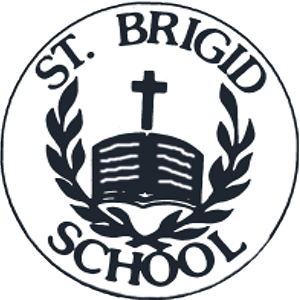
Our School
Dress Code
Clothing | Details |
|---|---|
Plain white or plain navy tops include: |
|
Plain navy-blue bottoms include: |
|
Other clothing items include:
|
|
What is Not Included or What Not to Wear
Denim/jeans, vinyl material like wind pants.
Hoodies.
Clothing with visible labels, logos of any size, contrasting colours, coloured buttons or stitching, stripes or detailing.
Flip flops and slip on sandals without straps.
Mini-skirts, halter-tops, tank tops, muscle shirts, t-shirts with vulgar sayings.
Clothing with tears/holes.
Oversized clothing (shirts to the knee, pants hanging low and off the waist).
Hats and sunglasses are only to be worn outdoors (outdoor wear).
Other Details
St. Brigid Spirit Wear (clothing with St. Brigid logo) is permitted to wear on any day, except for yellow shirts. Yellow shirts and sweaters will be permitted on special spirit days, for sports teams, and class trips.
There is uniform dress code requirement for gym for Grades 7 and 8.
Items will be available for purchase each September and will consist of navy gym shorts and a yellow t-shirt with the St. Brigid Gym logo (same as spirit shirt).
There is no dress code requirement for student outerwear including outdoor sweaters, jackets, snow pants, hats, gloves, and sunglasses.
St. Brigid Spirit Wear items will be available for purchase from time to time through Catholic School Parent Council (CSPC) initiatives.
Dress Down Days
During the year dress down or non-dress code days will be planned. These days will be announced throughout the year so parents and students can be prepared. Students have the option of wearing the dress code or regular clothes, which may include coloured clothing, denim/jeans, and logos. All other guidelines for what is not included should be followed. Students should be modestly dressed in keeping with our Catholic values.
